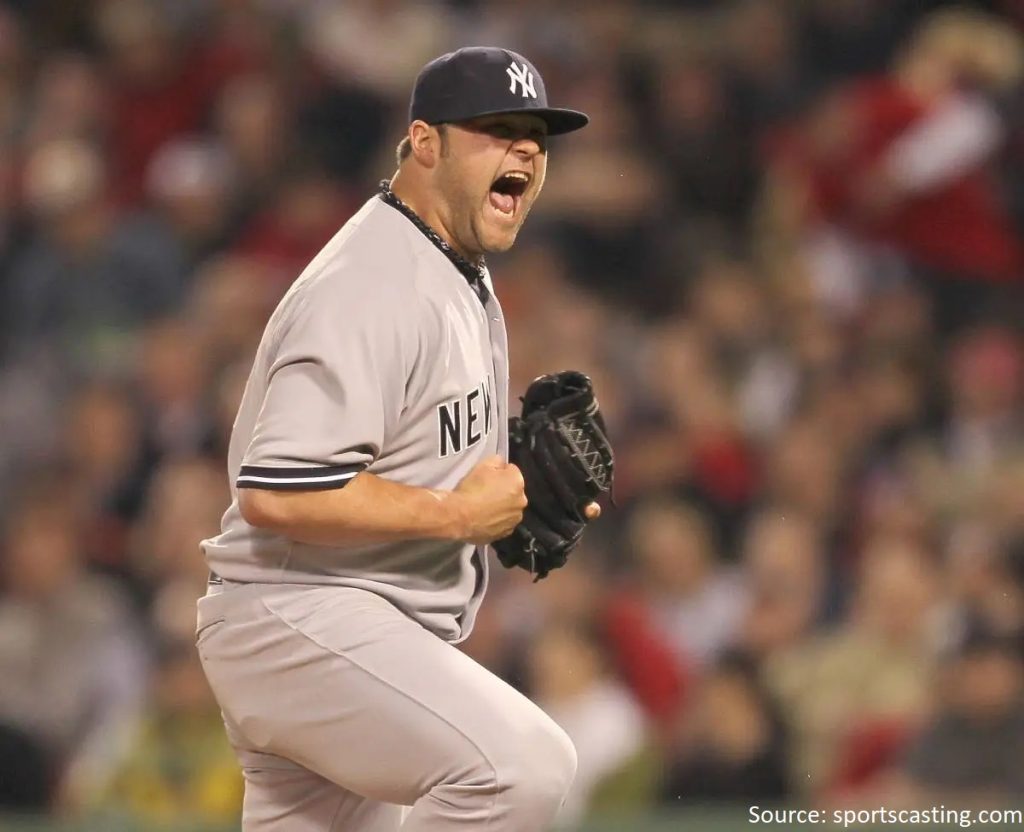What is a double play in baseball? A double play in baseball occurs when two outs are made in a single play, known as a DP or twin killing. Meeting the conditions set by MLB rule 9.11, this defensive play involves three players and requires coordination and skill.
The second baseman, third baseman, shortstop, and outfielders all play vital roles in executing successful double plays. While some types of double plays are more common, like the 4-6-3 double play, the rarest is the unassisted triple play.
With a rich history of famous examples, the concept of the double play is deeply ingrained in the sport.
Key Takeaways
- A double play in baseball represents 2 outs in a single play and involves 3 defensive players.
- The positions of the players involved in a double play are represented by numbers (6-4-3, 4-6-3), and each player has a specific role in executing the play.
- The second baseman, third baseman, shortstop, and outfielders play crucial roles in double plays by fielding the ball, forcing out runners, and contributing to the defensive strategy.
- While some double plays occur more frequently than others, the rarest type is the unassisted triple play, where a single fielder gets all 3 outs in a half-inning. Famous double play combinations and memorable plays have been recorded throughout baseball history.
What Is A Double Play In Baseball?
The double play, also known as DP, involves three defensive players and must meet the conditions mentioned in MLB rule 9.11, as explained in the pre-existing knowledge. It represents two outs in a single play and is an important defensive strategy in baseball.
The double play can be executed in various ways, such as when the pitcher tosses a ground ball to the hitter and the infielders make force outs, or when the catcher throws out a baserunner attempting to steal a base. Each defensive player is assigned a number from 1 to 9, indicating their position in the double play.
The second baseman, third baseman, shortstop, and outfielders play crucial roles in executing double plays, as they assist in forcing out runners and contribute to the defensive strategy. Double plays occur with varying frequencies, with the 4-6-3 and 6-4-3 double plays being the most common. Some rare double plays, such as the unassisted triple play, have also been witnessed in baseball history.

Notable examples of famous double plays include those executed by the Chicago Cubs’ trio of Joe Tinker, Johnny Evers, and Frank Chance, as well as memorable plays by the New York Yankees and New York Mets.
Conditions and Execution
The execution of a successful double play relies on meeting specific conditions outlined in MLB rule 9.11. These conditions ensure that all defensive players involved in the play contribute to the successful outcome.
The key positions involved in double plays are the second baseman, third baseman, shortstop, and outfielders. The second baseman covers a large defensive area and assists in forcing out runners, playing a crucial role in the execution of double plays.
The third baseman fields the ball first and throws to either the second baseman or the first baseman, contributing to getting the first out. The shortstop also plays a key role in double play execution by assisting in forcing out baserunners and contributing to the defensive strategy.
Outfielders, particularly the left fielder and right fielder, play a crucial role in executing double plays by catching fly balls and forcing out baserunners. While the frequency of double plays varies, some common examples include the 4-6-3 and 6-4-3 double plays, which occur relatively frequently in a season.
In rare instances, an unassisted triple play can occur, where a single fielder gets all three outs in a half-inning, making it the rarest double play in baseball. Famous examples of double plays include the remarkable double play trio of Joe Tinker, Johnny Evers, and Frank Chance for the Chicago Cubs, who executed 491 double plays between 1902-1912.

Positions and Roles
Second baseman covers a large defensive area and assists in forcing out runners, playing a crucial role in executing double plays. They are positioned between first and second base and are responsible for fielding ground balls hit in their direction.
When a double play is possible, the second baseman receives the ball from the shortstop or third baseman and quickly pivots to throw to first base, completing the first out.
They must have quick reflexes and strong throwing accuracy to execute this play effectively. Additionally, the second baseman must have good communication skills to coordinate with the other infielders and make split-second decisions during the play. Their ability to turn double plays efficiently greatly contributes to the success of the team’s defense.
Frequency of Double Plays
Occurring at a frequency that varies depending on the specific combination of positions involved, double plays are not a common occurrence in baseball. However, when they do happen, they can completely change the momentum of a game.
Here are some interesting facts about the frequency of double plays in baseball:
-
The 4-6-3 double play, where the ball is hit to the shortstop, thrown to the second baseman, and then to the first baseman, occurs approximately 200-250 times in a season.
-
The 6-4-3 double play, which involves the ball being hit to the second baseman, thrown to the shortstop, and then to the first baseman, happens about 150-200 times in a season.
-
The 1-6-3 double play, where the ball is hit to the pitcher, thrown to the shortstop, and then to the first baseman, occurs around 50-75 times in a season.
-
The 5-4-3 double play, involving the ball being hit to the third baseman, thrown to the second baseman, and then to the first baseman, happens approximately 25-50 times in a season.
Double plays are not frequent, but some combinations occur more often than others, showcasing the coordination and skill required to execute them successfully.
The infrequency of double plays adds to their excitement and impact in the game of baseball.
Rare and Famous Examples
Joe Tinker, Johnny Evers, and Frank Chance formed an unforgettable trio known for their remarkable execution of 491 double plays between 1902-1912.
Their seamless coordination and exceptional skills made them legends in the baseball world. These three players were the heart of the Chicago Cubs’ defense and played pivotal roles in turning countless double plays.
Together, they displayed incredible teamwork, agility, and baseball IQ, resulting in an unbreakable record that still stands today. Their ability to anticipate plays, make quick and accurate throws, and cover the infield with precision made them a formidable force.

Their legacy continues to inspire future generations of baseball players to strive for greatness in executing double plays.
Frequently Asked Questions
How many types of double plays are there in baseball?
There are several types of double plays in baseball, including the 4-6-3, 6-4-3, 1-6-3, and 5-4-3 double plays. Each type involves a different combination of defensive players and occurs with varying frequencies throughout the season.
What is the role of the catcher in a double play?
The catcher plays a key role in a double play by throwing out baserunners attempting to steal a base. They contribute to the defensive strategy and assist in forcing out runners, acknowledging their contribution to the success of the play.
Which outfield positions are commonly involved in double plays?
The left outfielder (position number 7) and the right outfielder (position number 9) are commonly involved in double plays in baseball. They catch fly balls and force out baserunners, contributing to the success of the defensive play.
How often do double plays occur in a baseball season?
Double plays occur with varying frequency in a baseball season. The most common are the 4-6-3 and 6-4-3 double plays, happening around 200-250 and 150-200 times, respectively. Less frequent are the 1-6-3 and 5-4-3 double plays, occurring 50-75 and 25-50 times per season.
Can you give an example of a famous unassisted triple play in baseball history?
One famous example of an unassisted triple play in baseball history occurred on May 31, 1927, when Detroit Tigers’ second baseman Johnny Neun caught a line drive, stepped on second base to force out a runner, and tagged another runner approaching second base.
Conclusion
In conclusion, a double play in baseball is a defensive play that results in two outs being recorded in a single play. It requires precise execution and adherence to MLB rule 9.11.
Various defensive players contribute to the success of a double play, with the second baseman, third baseman, shortstop, and outfielders playing crucial roles.
While some double plays occur more frequently, the rarest is the unassisted triple play.
Throughout history, there have been famous examples of double plays, highlighting the skill and teamwork required to achieve this feat.
